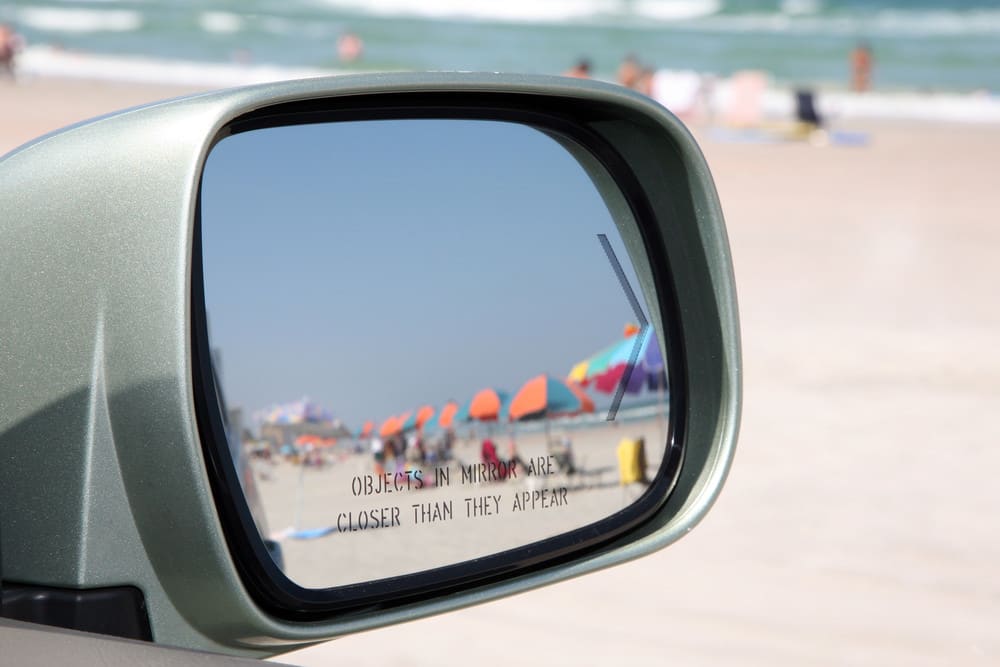

Take a second to look at your passenger side view mirror and you’ll see a few words printed at the bottom of the glass. It’s a warning that reads “objects in mirror are closer than they appear.” Objects seen in the passenger mirror are definitely skewed. Why is there distortion in the passenger side view mirror (but not in the driver side view mirror)?
It’s all about the shape
The reason objects are closer than they appear in the passenger side view mirror is actually pretty simple. The mirror is slightly curved (it’s convex, or bowed outward in the center, and curves back on the sides). The driver side mirror is not shaped the same way – it’s flat. Why the difference?
The shape of the passenger mirror is intentional and it’s done in an attempt to achieve two goals. First, automakers have to overcome the problem of greater distance between the driver and the passenger side mirror than the driver and the driver side mirror.
Second, the angle of the view is different, which means that a flat mirror would not be usable in this position. Finally, the mirror is curved in an attempt to eliminate blind spots for the driver, making it safer and easier to view cars or other objects on the right side of your vehicle.
You can see the same effect on aftermarket blind spot mirrors. They’re usually round, but they share the convex shape of your stock passenger side mirror. Hold one up and you’ll notice that the objects reflected in the surface truly are closer than they appear.
The warning on your mirror is exactly that – it’s intended to make you aware that the perceived distance between you and another car or object is less than you think.



